DC Comics is trying something new. In the wake of their Rebirth initiative, the publisher has rapidly expanded its content to include diverse new imprints such as Young Animal, Wildstorm, Black Label, Ink, and Zoom. As their lineup expands, it can be hard to figure out what to pick up each week. That’s what the Comics Beat managing editor Alex Lu, entertainment editor Kyle Pinion, and contributor Louie Hlad are here to help you with.
THIS WEEK: Alex dives into the end of Dark Knights: Metal #6 and the impactful Doomsday Clock #4.
Note: the reviews below contain **spoilers**. If you want a quick, spoiler-free buy/pass recommendation on the comics in question, check out the bottom of the article for our final verdict.
 Doomsday Clock #4
Doomsday Clock #4
Writer: Geoff Johns
Artist: Gary Frank
Colorist: Brad Anderson
Letterer: Rob Leigh
The key to a strong sequel is paying tribute to the past while building upon the foundation of its predecessor towards something new. The reason why so many sequels, even the technically solid ones like Ocean‘s Thirteen, fall short of their forebears is because while they look fresh, they have nothing new to teach us. And for some time now, whether or not Doomsday Clock would have something fresh to say in response to Alan Moore’s and Dave Gibbons’ Watchmen has been a key question on the minds of fans and pundits around the industry.
Watchmen is one of, if not the most, culturally relevant book DC has ever published. It’s also one that has formed the core of a decades long battle between Moore and the publisher. So with this much pressure riding on the shoulders of any book that directly references Watchmen, Doomsday Clock has had to do a lot to prove why it needs to exist at all. In Chapter IV, however, out this week, it may well have finally succeeded in doing that.
Doomsday Clock #4 is an exercise in small-scale storytelling. Unlike the previous three issues of the series, which have filled the story to brim with characters both new and old from the world of Watchmen and the DC Universe proper, this chapter focuses entirely on Rorschach II. His identity in the wake of Rorschach I aka Walter Kovacs’ death at the end of Watchmen was one of the first mysteries introduced by Doomsday Clock #1 and forms the catalyst for this issue, which attempts to explore the events that shaped this Rorschach into the vigilante he’s become.
From a structural perspective, Doomsday Clock #4 directly echoes Watchmen #4, which focuses on the history of Dr. Manhattan. Both of these chapters are close character studies, weaving through moments in time to paint a picture of how these men’s pasts have influenced their present days. Watchmen #4, focusing on a character who can perceive all moments in time simultaneously, take a meta approach to the conceit, weaving through the various coincidences that led to his creation in order to ponder the mutability, or lack thereof, of time itself. Were we destined to reach a point in our history where we could wipe each other out with a button? Had it always been encoded in our futures? Watchmen #4 is my favorite issue of the story because it is both timely and timeless, focusing on a prescient thought at the fore of peoples’ collective consciousness at the time of Watchmen‘s publication while diving deeper into the human mindset that led us to that point in our history.
Similarly, like Watchmen #4 ponders the mutability of time, Doomsday Clock #4 seeks to discuss the mutability of truth. We used to take for granted that facts were facts beyond dispute, but with the rise of “Fake News” in our lexicons and our leaders’ ability to actively delude themselves into truly believing untrue things, we’ve discovered that perhaps the nature of truth is not as set in stone as we thought.
Indeed, the identity of Rorschach II is the first salvo Doomsday Clock #4 fires in its attempt to recontextualize the Watchmen universe’s history. It’s quickly established that Rorschach II’s real name is Reggie Long. That’s right. He’s the son of Gloria Long and Dr. Malcolm Long, the latter of whom attempted to psycho-analyze Kovacs in Watchmen. While particularly sharp-eyed readers might have seized upon the mug on Dr. Long’s desk that said “dad,” the mug was never featured prominently and we were never given any other reason to suspect that the Long marriage, which was very much on the rocks throughout Watchmen, ever produced any children. And in the wake of this revelation, we’re forced to recontextualize everything we knew about the Longs, transforming the full perception of them we received in Watchmen into a brand new one. A new truth.
Doomsday Clock #4 is full of these new truths, both in macro and micro. We thought the psychic monster Ozymandias masterminded the creation of killed everyone around it, but many survived. Ravaged. Shocked. Perceiving horrific things that weren’t really there. The constant match cuts between Reggie’s visions and reality emphasize the way that our minds, the ultimate arbiter of our truth, can play tricks on us. The match cuts between past and present emphasize the ways that our past experiences, lived or imagined, can influence the way we react to our present situations.
Moreover, even Rorschach’s mask is reinterpreted in Doomsday Clock. Walter Kovacs saw the black and white fabric’s inability to mix as symbolic of the clear line between good and evil, with no room for grey. But Reggie Long sees not the color but the form– an ambiguous, ever shifting mass of ink that never takes the same shape twice. We’re all looking for truth, he says.
Gary Frank and Brad Anderson deserve a ton of credit for the success of Doomsday Clock up until now. Their work together is a feast for the senses, channeling the hard lights and compositional intensity that Dave Gibbons employed in Watchmen while developing a unique feel all their own. Frank renders faces with a greater amount of linework than Gibbons did, rendering characters with a greater sense of vital emotion that befits the intensity of the scenes we’re presented with throughout this chapter.
The fact of the matter is, Doomsday Clock #4 argues, is that the truth is always distilled through the lens of its viewer. It’s not something that we settle upon forever, but rather is something that is constantly evolving through experience. Early on in his life, Reggie said that he wasn’t a fighter. However, then he ended up in a mental institution where he saw a man say he could fly and then did so. Under the tutelage of The Moth, Reggie became a fighter. His truth became something new.
So what does all of this say about Doomsday Clock‘s argument about the epidemic affecting our present day world? Is the book saying that those who seek comfort in the halls of “alternative truths” are right do so? I don’t think so. But I do think the book argues that even they are on a journey motivated by the same factors that motivate us all. And what remains to be seen is where that journey takes us– whether we can come back to a shared truth that unites us, or if our realities are so disparate that they inevitably tear us apart.
Verdict: Buy
 Dark Nights: Metal #6
Dark Nights: Metal #6
Writer: Scott Snyder
Penciller: Greg Capullo
Inker: Jonathan Glapion
Colorist: FCO Plascencia
Letterer: Steve Wands
If calculated and measured books like Mister Miracle and Doomsday Clock stand at one end of spectrum of comics that DC publishes, their antithesis would be Dark Nights: Metal #6, the pinnacle of MELODRAMATIC PUNK ROCK COMICS.
It’s hard to talk about an event like Metal because it has, over the course of the last year, truly become a little bit beyond criticism. That’s not a statement of it’s quality, but a simple truth of its intent: to create a book that encompasses and celebrates the most hectic, chaotic, and comic-book-y strands of the DC Universe.
You only have to look at the source material for Metal to see that, underneath all the Dark Knights and chaotic fights, Metal has always been a story about stories. From the narrative backbone that is Hawkman’s journal to the very direct continuation of Grant Morrison’s DC Universe material and even appearances from the most meta elements of Jack Kirby’s Fourth World, it’s clear that Metal is not a book bounded in logic or reason. It doesn’t seek to touch so much as it does evoke that feeling you got when you were a young kid opening up a DC comic for the first time, awed by epic battles and grand ideas just a bit beyond your grasp.
So before I get too deep into this, I will say that I think Metal is far from the cleanest comic on the shelf. It suffers from a lot of the issues that many event comics do. Some of the visual stylings of the title are a bit too much to take in at once, leaving pages feeling cluttered. Morever, Metal has had a sense of bloat from too many disparate plot threads that leads to this, the last issue, suffering from “wrap up syndrome” where the various chess pieces have to be moved into place just so to achieve the desired ending. But that said, I honestly don’t think those quibbles matter all that much because they actually work towards achieving the desired effect on the reader.
If you’re reading Metal at this point, you’re likely a big fan of the DC Universe. Accessibility doesn’t really matter to you– you get a kick out of Barbatos fighting with members of the Justice League who have coopted the god in the machine, the Ultima Thule, in an effort to save the endlessly expanding multiverse. And that’s exactly what you get in Metal #6. You get Scott Snyder at his most epic. You get Greg Capullo and Jonathan Glapion dialing every page up to eleven, filling panel after panel with bodies and lighting. You get FCO Plascencia at his most vivid and have Steve Wands working overtime on those letters. And you turn that nozzle from eleven to TWELVE when you reveal that the secret metals of the universe don’t stop at nine– there’s a tenth metal of creation, itself.
In storytelling, I think that every creator or creative team eventually makes a choice: are we telling a story that aims to go deep into a specific idea, or are we telling a story that wants to go wide and throw ideas at a page to see what sticks? Metal is very much the latter and it has never made an attempt to be anything that it isn’t. It doesn’t purport to be the smartest or most profound book on the shelf. It’s the book with the die-cut covers and foiling. It features all your favorite heroes meeting up and even introduces a world full of chimp-versions of the Justice League for good measure. Why can the Tenth Metal expand beyond what physics say it should be able to? Who cares. Metal flips a bird at the rules. It’s not here to tell you about our past or present. Metal exists to show you what might be in the future.
So yeah, it’s pretty punk rock. And that makes it pretty fucking fantastic.
Verdict: Buy
 Round-Up
Round-Up
- Mystik U #3 brings an end to this lovely Young Adult-aimed series about DC’s coolest magic wielders. The issues I have with this series now remain more or less the same as they were when it started– I feel like, even given the dramatically expanded page counts, every issue of this book felt too compressed. There was no time to linger on the huge number of emotional beats throughout every chapter of the story, so everything felt a little more perfunctory than it would had the art been given more time to breathe. That said, I’m still a huge fan of what Alisa Kwitney and Mike Norton accomplished over the course of this book, injecting a sense of fun and empathy into a part of the DCU we rarely get to see at all, and especially not in such human terms. Once Mystik U is collected, I highly recommend passing this onto younger readers looking for a foothold into DC.
- The Terrifics #2 continues to be a fun little romp of a story. Ivan Reis’ art never fails to bring a smile to my face and writer Jeff Lemire does a solid job of lampshading the “Fantastic Four” nature of this time while also adding some interesting new twists to the mix that should set up some interesting stories in the issues to come.
- Mother Panic: Gotham A.D. #1 resets Violet Paige’s story in a pretty extreme way. As the most inconsistent of the initial four Young Animal offerings, it makes sense that Mother Panic would have the most extreme rework following the end of the “Milk Wars” event. However, I’ve never been a big fan of alternate timeline reboots– they’re always too continuity dependent on what came before them to be friendly to new readers and carry a lot of DNA from the old story, where your mileage definitely would have varied. And that’s kind of the case here, though I will say that I think Mother Panic: Gotham A.D. #1 cleans Violet’s slate in a way that I, as someone who has kept up with the series, can appreciate. All of the sideplots have been reset and Violet has a clear throughline for her first conflict in the new timeline. So given that sense of clarity, I’m happy to give this title another shot. And if you haven’t kept up? Well, I’d give it a browse and see what you think. Mother Panic’s costume is still one of the coolest new looks to come out of DC, if nothing else!
Miss any of our earlier reviews? Check out our full archive!


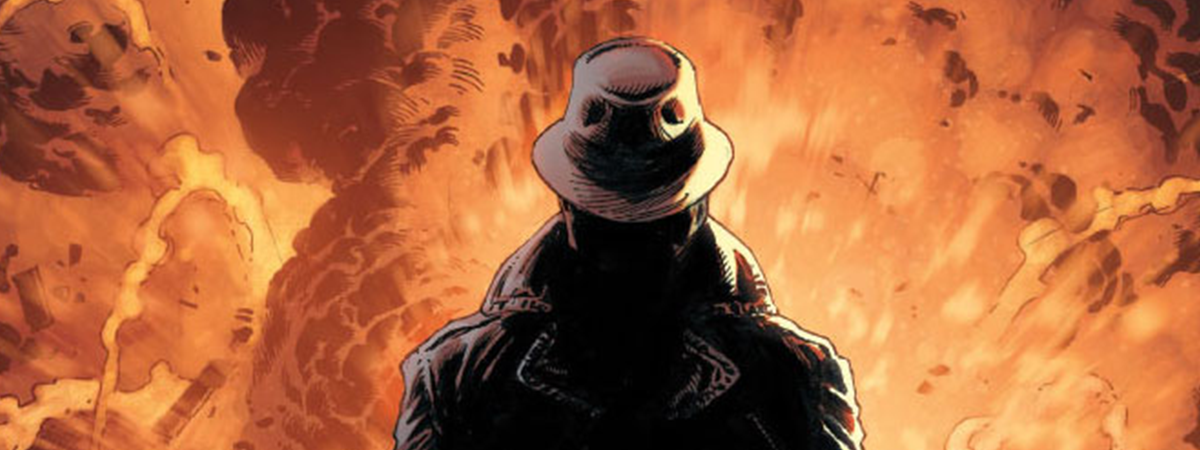
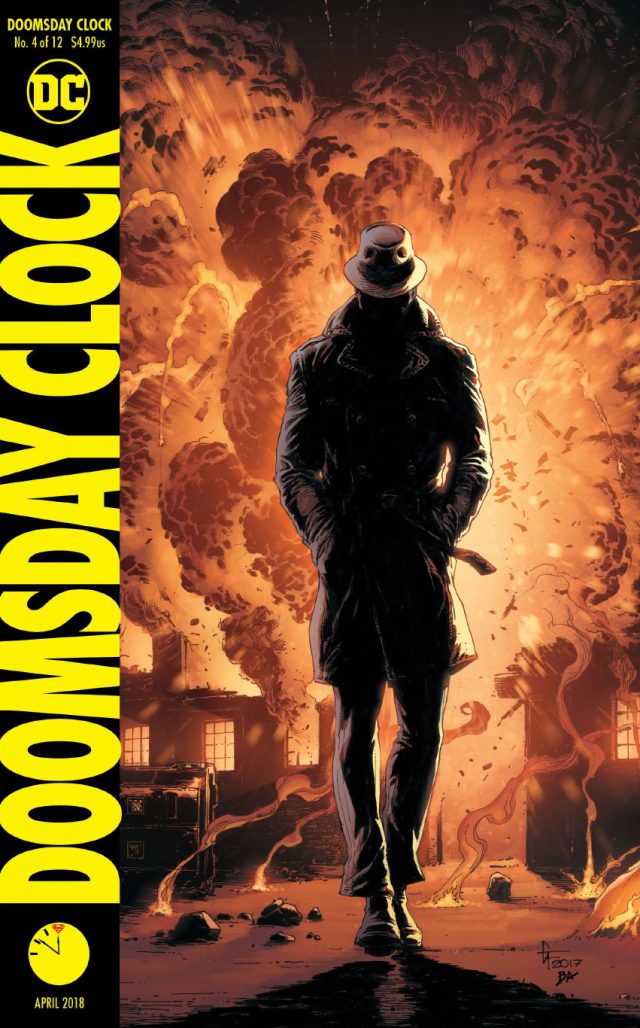
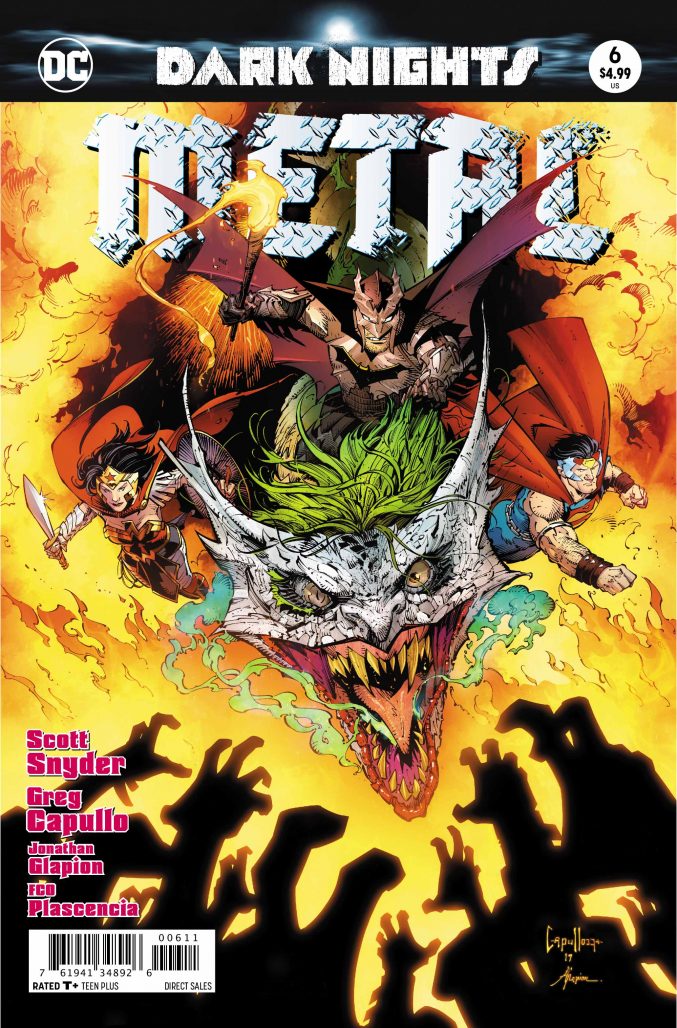
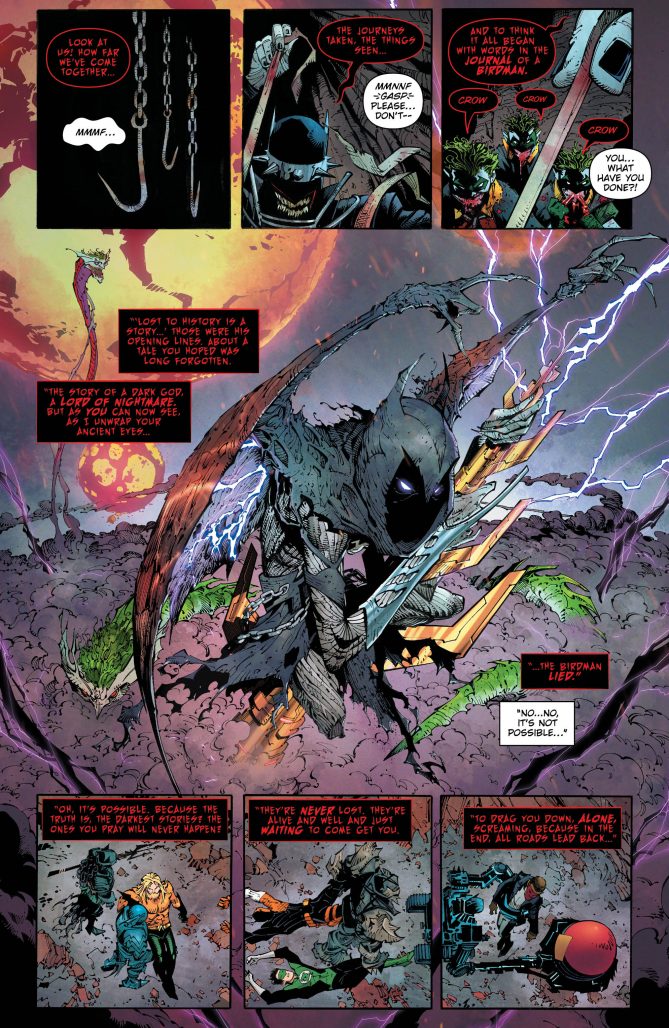
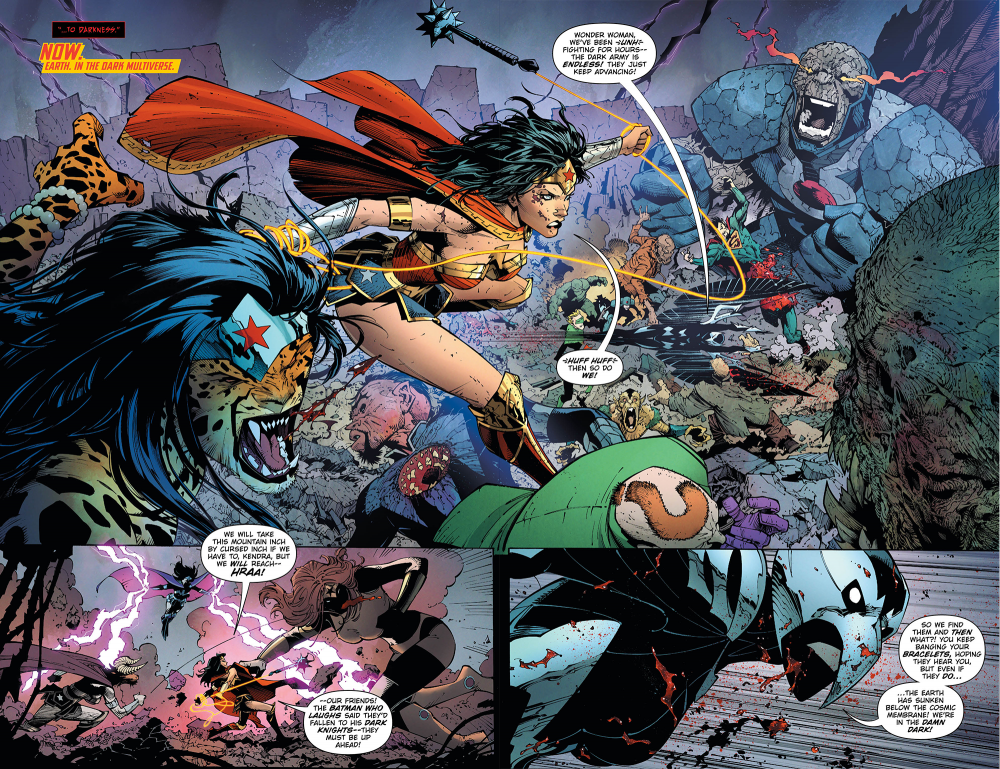
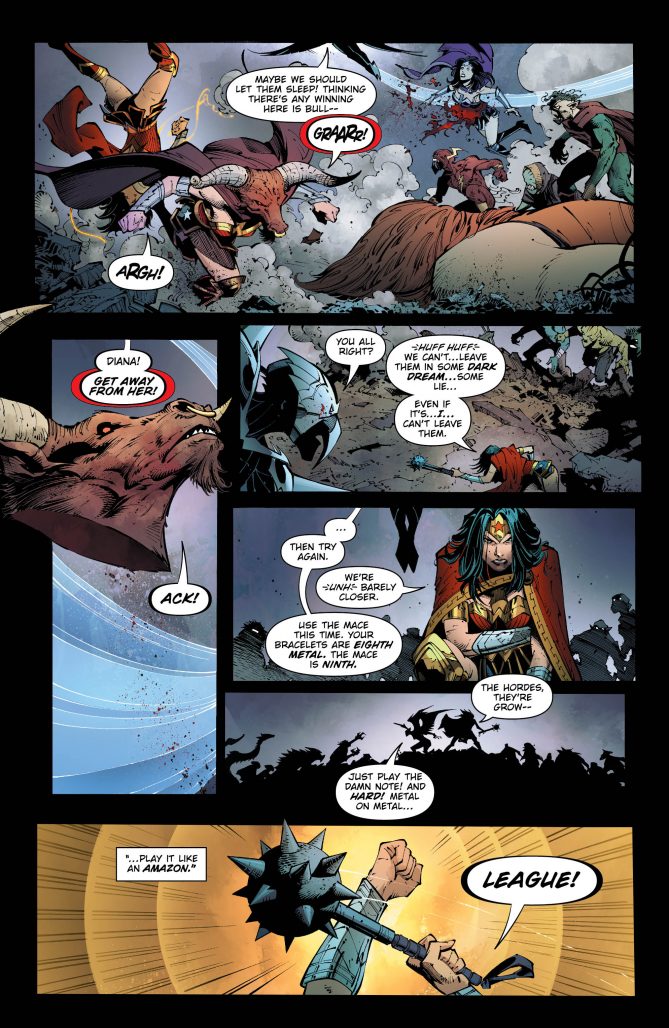
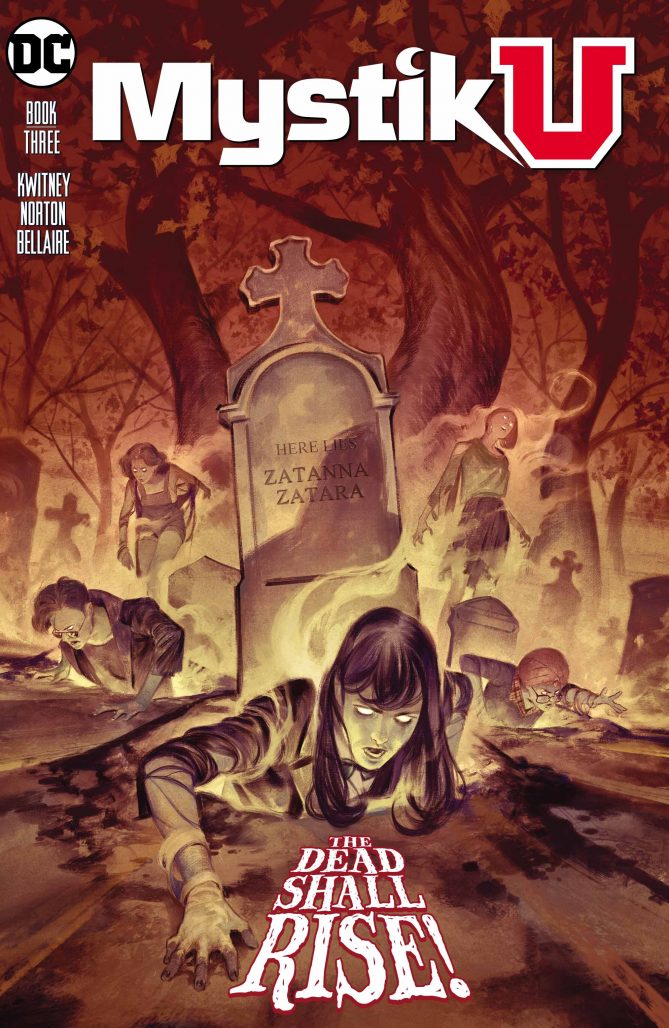



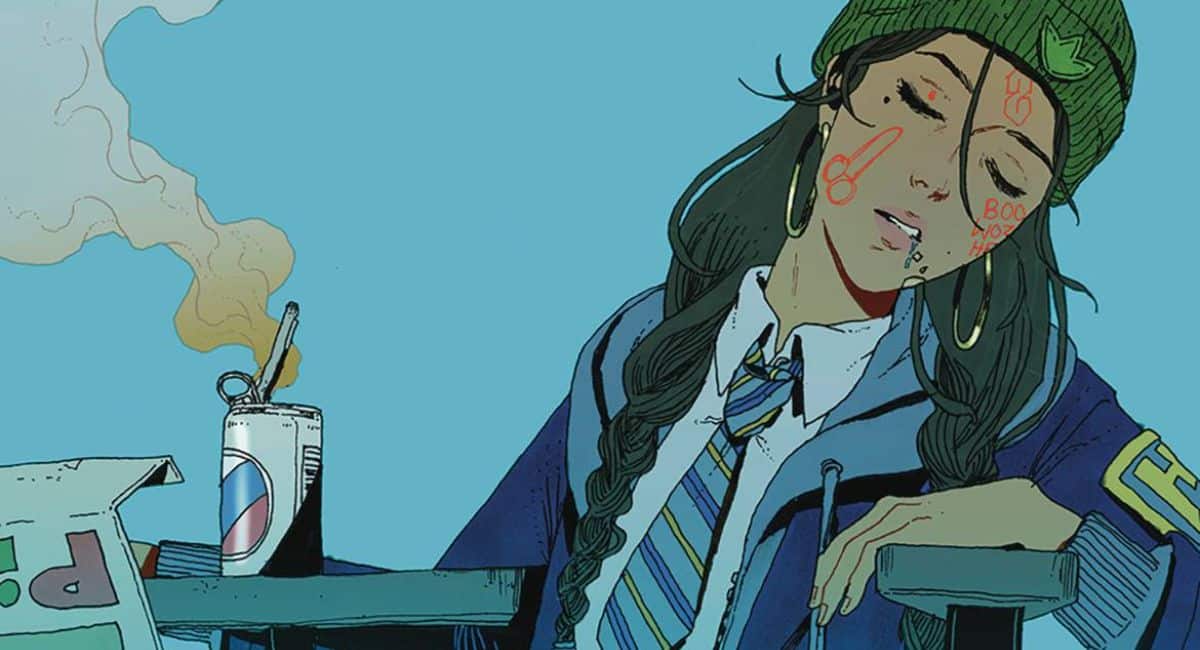

“It’s hard to talk about an event like Metal because it has, over the course of the last year, truly become a little bit beyond criticism.”
Translation = I don’t understand Metal at all but it must be good because it’s got lotsa Batmans in it 10 outta 10.
Metal has been surprisingly hot garbage. Snyder knows how to tell a compelling and coherent story. This ain’t it.
I’m interested in the DCU and have been since the late 50s. I was also a fan of early punk rock. I find nothing in “Metal” to be of any interest in either context. Hard pass.
Comments are closed.